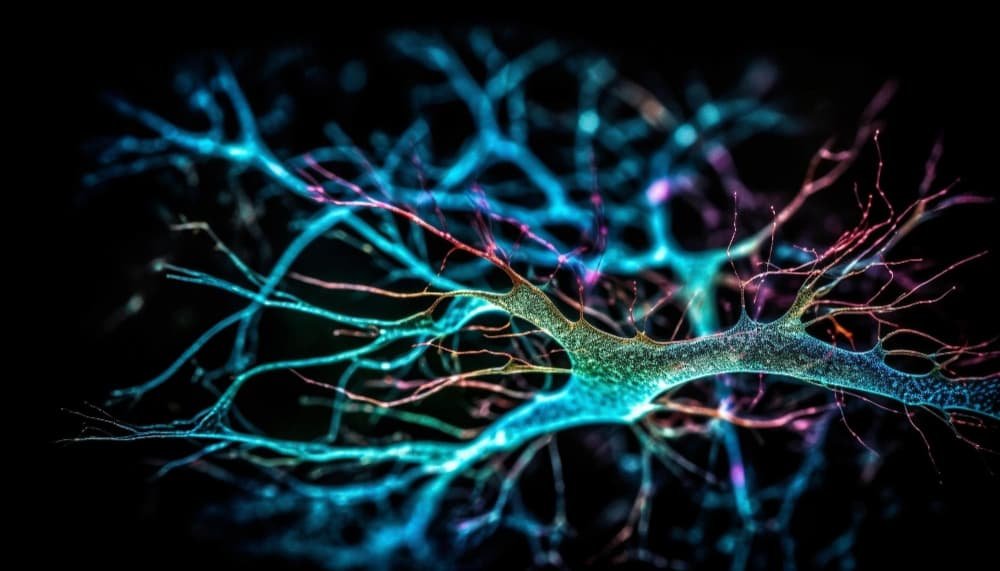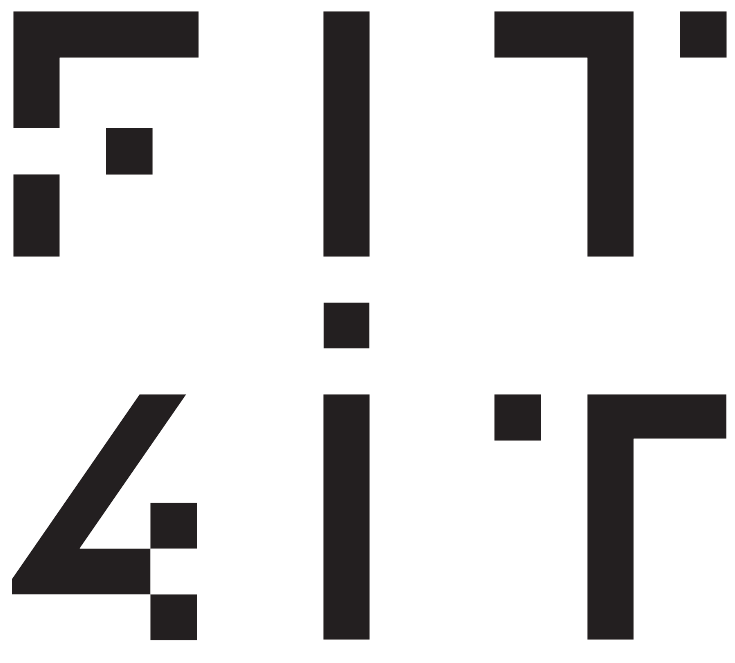Most people chase fat loss through stricter diets and tougher workouts, not knowing that the body needs recovery (with warming up and cooling down) as well as a proper, healthy diet and snacking. More importantly, your body is a system of interconnected nodes to one command center, that is, the nervous system. That is why you must understand that the connection between your nervous system and fat loss is what truly determines how efficiently your body burns energy and adapts to change.
At FIT4IT, we call our approach evolutionary biogenics. It is the science of helping the body return to its natural rhythm of regulation, balance, and energy use. Unlike conventional personal training that focuses solely on physical effort, the FIT4IT approach starts with the nervous system, the true driver of lasting metabolic change. Once you understand how your nervous system directs your metabolism, fat loss becomes less about struggle and more about alignment.

The nervous system and fat loss are deeply connected, determining how much energy your body burns or stores.
TDEE Explained
| Component | What It Means | Typical % Contribution |
|---|---|---|
| Basal Metabolic Rate (BMR) | Energy used at rest for essential life functions — breathing, temperature, brain activity, organ maintenance | 60–70% |
| Non-Exercise Activity Thermogenesis (NEAT) | Movement during the day that isn’t exercise — walking, standing, fidgeting, posture changes | 15–30% |
| Exercise Activity Thermogenesis (EAT) | Energy used in structured workouts | 5–10% |
| Thermic Effect of Food (TEF) | Energy used to digest, absorb, and metabolize nutrients | 8–10% |
So even though most people focus on workouts and food, the truth is that up to 70% of total fat-burning potential lies in your BMR, and that’s controlled primarily by your nervous system.
Why Traditional Fat Loss Hits A Wall
Most trainers and programs attempt to manipulate EAT, NEAT, and TEF, which account for 30-40% of total energy expenditure and are the easiest to influence. They make you train harder (↑ EAT), tell you to move more (↑ NEAT), and design high-protein diets (↑ TEF) to raise digestive thermogenesis slightly.
And initially, it works. You burn more calories, lose fat, and feel better. But then, it stops. After a few weeks, the same workout burns fewer calories. You feel more tired, hungrier, and less motivated. Your body seems to adapt, and it does. This is called physiological adaptation, and it’s the body’s built-in defense system against energy loss.
Physiological Adaptation
The human body evolved to protect itself from energy scarcity. When it senses prolonged calorie restriction, intense stress, or overtraining, it automatically reduces output to conserve resources.
Here’s what happens:
- BMR drops by 10–20% due to reduced thyroid conversion. (T4 → T3)
- NEAT declines, you subconsciously move less to save energy.
- EAT efficiency improves, and the same activity now burns fewer calories.
- Hunger hormones (ghrelin, leptin) fluctuate, driving cravings, mental overload, and fatigue.
Your nervous system orchestrates all of this through the HPA ( Hypothalamic–Pituitary–Adrenal) axis, the brain’s command center for stress and metabolism.
Nervous System & Metabolism Relationship
Here’s what most trainers miss: your Basal Metabolic Rate (BMR), the biggest slice of your daily calorie burn, isn’t set by your workouts or your diet.
It’s set by your nervous system. Every heartbeat, breath, and cell repair you perform is orchestrated by your autonomic nervous system, the invisible engine that keeps you alive even when you’re asleep. It has two key gears:
- The Sympathetic Nervous System (SNS): An accelerator for the “fight, flight, or focus” mode that mobilizes energy and heightens alertness.
- The Parasympathetic Nervous System (PNS): A brake for the “rest, digest, and rebuild” mode that restores balance and promotes repair.
But when life pushes you into constant overdrive, deadlines, poor sleep, stimulants, and emotional stress, that balance disappears. Your sympathetic system takes control, keeping your body in a state of low-grade emergency. And when your body thinks it’s in danger, it does what it’s evolved to do best: it conserves energy.
How A Stressed Nervous System Suppresses BMR
When your nervous system stays dysregulated for too long, your metabolism quietly begins to shut down parts of the system to protect you. Here’s what that looks like inside your body:
- Cortisol stays high, and your burn drops. When your body thinks it’s constantly under pressure, it keeps pumping out cortisol, the primary stress hormone.
- Over time, this dampens thyroid activity, particularly the conversion of T4 to T3, the hormone that sets your metabolic “idle speed.” It’s like turning down the heat on your internal furnace. You burn fewer calories at rest, even if you’re eating clean and training hard.
- Your digestion and recovery weaken. Chronic stress dulls signals from the vagal nerve, which is the highway between your brain and gut that conveys the “rest and digest” signal. Digestion slows, nutrient absorption declines, and the thermic effect of food (TEF) drops. You process less and store more.
Impact Of Chronic Stress
- Your cells make less energy. Overstressed mitochondria, your cellular power plants, produce less ATP from the same food, leaving you tired and sluggish.
- You stay wired but tired. Low Heart Rate Variability (HRV) means your body can’t switch easily between stress and calm. You feel restless, even when you’re exhausted.
- You move less without realizing it. When the nervous system is tense, natural movement (NEAT) declines. You fidget less, your posture softens, and total daily calorie burn drops further.
Over time, your metabolism shifts into survival mode. It becomes conservative, efficient, and protective, all brilliant mechanisms if you’re stranded in the wild, but disastrous if you’re trying to lose fat or feel energetic in modern life.
In short, when your nervous system is out of balance, your metabolism stops working for you and starts working against you.
That’s why the FIT4IT CNS Reset System™ focuses on rebuilding that balance. It does not focus on pushing the body harder, but also trains it to feel safe again. Because when your brain and body trust each other, the entire metabolic system wakes back up.
How FIT4IT CNS Reset System™ Helps Your Body
At FIT4IT, we designed the CNS Reset System™ around one truth:
You don’t fix a tired metabolism by pushing harder; you fix it by helping your body feel safe again. When the nervous system relaxes, your entire biology starts to trust itself.
The CNS Reset System™ works through three interconnected pillars that restore balance between your brain, body, and metabolism.
1. Neuromuscular Shaping
A science-backed method that retrains how your brain controls movement, balance, and energy. It starts with an in-depth CNS assessment that identifies stress markers and asymmetries, creating your personalized blueprint. Each session reactivates underused stabilizer muscles and integrates breathwork to calm the stress axis, improving posture, coordination, and emotional balance.
2. Anti-Inflammatory Nutrition
Food is communication. Our custom plans from specialised nutritionists calm inflammation, repair the gut lining, and restore vagus nerve balance, the bridge between your gut and brain. As inflammation drops, cortisol normalizes, hormones rebalance, and your body naturally shifts from fat storage to fat burning.
3. Mindfulness
A life coach might help you manage stress and motivation, but lasting transformation begins when the nervous system itself learns to stay balanced under pressure. Mindfulness is the control switch of your nervous system. Through our 12-week mindfulness course, you train your mind to respond, not react. This builds emotional stability, lowers stress, and supports long-term fat loss and mental clarity.

Chronic stress or poor sleep can disrupt this balance.
Together, these three pillars form a complete reset, aligning your mind, metabolism, and movement so your body can finally perform the way it was designed to.
In Summary
| Component | Typical % | What Most Trainers Target | How CNS Reset Impacts It |
|---|---|---|---|
| BMR (60–70%) | 60–70% | Ignored | Restores thyroid, HRV, and mitochondrial function → sustained metabolic rise |
| TEF (8–10%) | 8–10% | Slightly via diet | Enhances parasympathetic digestion and nutrient utilization |
| EAT (5–10%) | 5–10% | Overemphasized | Improves recovery and energy use without overtraining |
| NEAT (15–30%) | 15–30% | Encouraged | Increases naturally as CNS and dopamine levels stabilize |
The secret to fat loss is within the nervous system, to which we often never pay attention. All you need to do is reset it, and everything will fall into place.
References & Further Reading
- Adaptive thermogenesis/weight loss plateaus (Dulloo et al., Int J Obes, 2012) https://pubmed.ncbi.nlm.nih.gov/23107264/ — Adaptive thermogenesis in human body weight regulation https://www.sciencedirect.com/science/article/abs/pii/S0002916522065480 — Weight loss, weight maintenance, and adaptive thermogenesis
- NEAT / non-exercise activity thermogenesis (Levine) https://pubmed.ncbi.nlm.nih.gov/15102614/ — Nonexercise activity thermogenesis (NEAT): environment https://onlinelibrary.wiley.com/doi/abs/10.1111/j.1753-4887.2004.tb00094.x — Non-exercise activity thermogenesis (NEAT) https://journals.physiology.org/doi/pdf/10.1152/ajpendo.00562.2003 — Nonexercise activity thermogenesis (NEAT) PDF
- Vagal stimulation / mitochondrial efficiency (Wu et al.) https://pubmed.ncbi.nlm.nih.gov/27491814/ — Vagal nerve stimulation improves mitochondrial dynamics https://pmc.ncbi.nlm.nih.gov/articles/PMC5192749/ — Vagal nerve stimulation modulates mitochondrial function
- HRV / autonomic regulation (Shaffer et al.) https://pmc.ncbi.nlm.nih.gov/articles/PMC5624990/ — “An Overview of Heart Rate Variability Metrics and Norms” by F Shaffer et al. (2017) https://pubmed.ncbi.nlm.nih.gov/33117119/ — A practical guide to resonance frequency assessment (Shaffer)
Was this helpful?
Good job! Please give your positive feedback
How could we improve this post? Please Help us.






No Comments